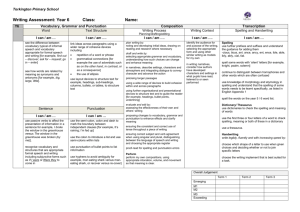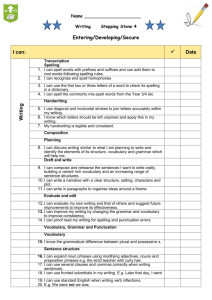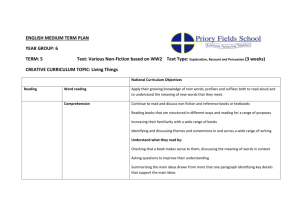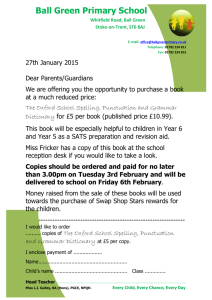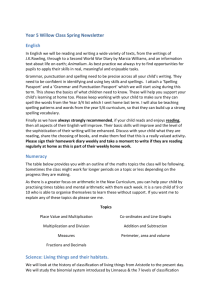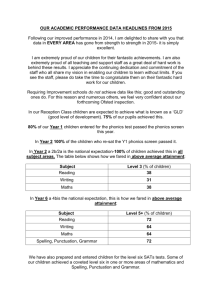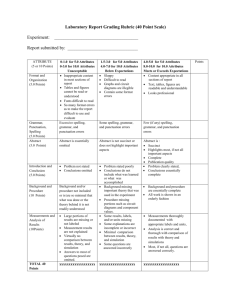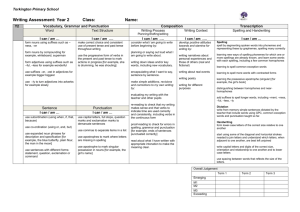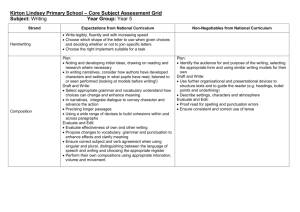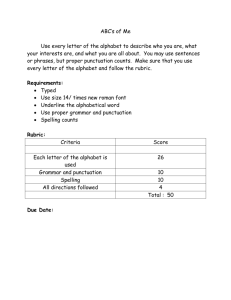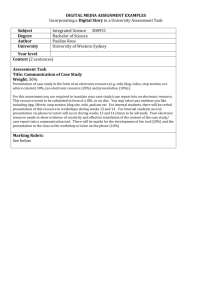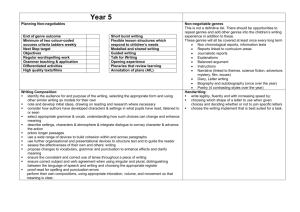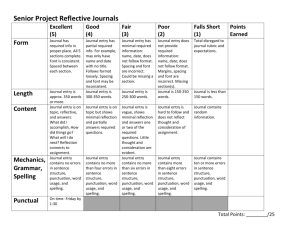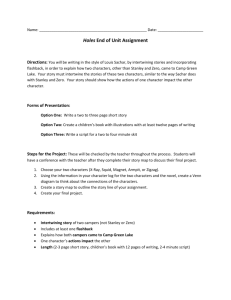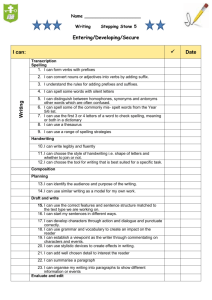Year 5 Writing - Torkington Primary School
advertisement
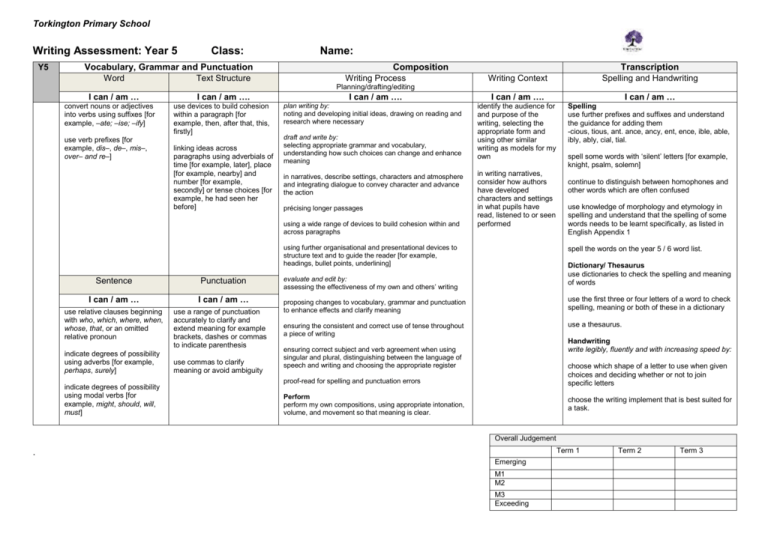
Torkington Primary School Writing Assessment: Year 5 Y5 Class: Vocabulary, Grammar and Punctuation Word Text Structure Name: Composition Writing Process Transcription Writing Context Spelling and Handwriting Planning/drafting/editing I can / am … convert nouns or adjectives into verbs using suffixes [for example, –ate; –ise; –ify] use verb prefixes [for example, dis–, de–, mis–, over– and re–] I can / am …. use devices to build cohesion within a paragraph [for example, then, after that, this, firstly] linking ideas across paragraphs using adverbials of time [for example, later], place [for example, nearby] and number [for example, secondly] or tense choices [for example, he had seen her before] I can / am …. plan writing by: noting and developing initial ideas, drawing on reading and research where necessary draft and write by: selecting appropriate grammar and vocabulary, understanding how such choices can change and enhance meaning in narratives, describe settings, characters and atmosphere and integrating dialogue to convey character and advance the action précising longer passages using a wide range of devices to build cohesion within and across paragraphs I can / am …. I can / am … identify the audience for and purpose of the writing, selecting the appropriate form and using other similar writing as models for my own Spelling use further prefixes and suffixes and understand the guidance for adding them -cious, tious, ant. ance, ancy, ent, ence, ible, able, ibly, ably, cial, tial. in writing narratives, consider how authors have developed characters and settings in what pupils have read, listened to or seen performed using further organisational and presentational devices to structure text and to guide the reader [for example, headings, bullet points, underlining] Sentence Punctuation I can / am … I can / am … use relative clauses beginning with who, which, where, when, whose, that, or an omitted relative pronoun indicate degrees of possibility using adverbs [for example, perhaps, surely] indicate degrees of possibility using modal verbs [for example, might, should, will, must] use a range of punctuation accurately to clarify and extend meaning for example brackets, dashes or commas to indicate parenthesis use commas to clarify meaning or avoid ambiguity spell some words with ‘silent’ letters [for example, knight, psalm, solemn] continue to distinguish between homophones and other words which are often confused use knowledge of morphology and etymology in spelling and understand that the spelling of some words needs to be learnt specifically, as listed in English Appendix 1 spell the words on the year 5 / 6 word list. Dictionary/ Thesaurus use dictionaries to check the spelling and meaning of words evaluate and edit by: assessing the effectiveness of my own and others’ writing use the first three or four letters of a word to check spelling, meaning or both of these in a dictionary proposing changes to vocabulary, grammar and punctuation to enhance effects and clarify meaning use a thesaurus. ensuring the consistent and correct use of tense throughout a piece of writing Handwriting write legibly, fluently and with increasing speed by: ensuring correct subject and verb agreement when using singular and plural, distinguishing between the language of speech and writing and choosing the appropriate register choose which shape of a letter to use when given choices and deciding whether or not to join specific letters proof-read for spelling and punctuation errors Perform perform my own compositions, using appropriate intonation, volume, and movement so that meaning is clear. choose the writing implement that is best suited for a task. Overall Judgement Term 1 . Emerging M1 M2 M3 Exceeding Term 2 Term 3


